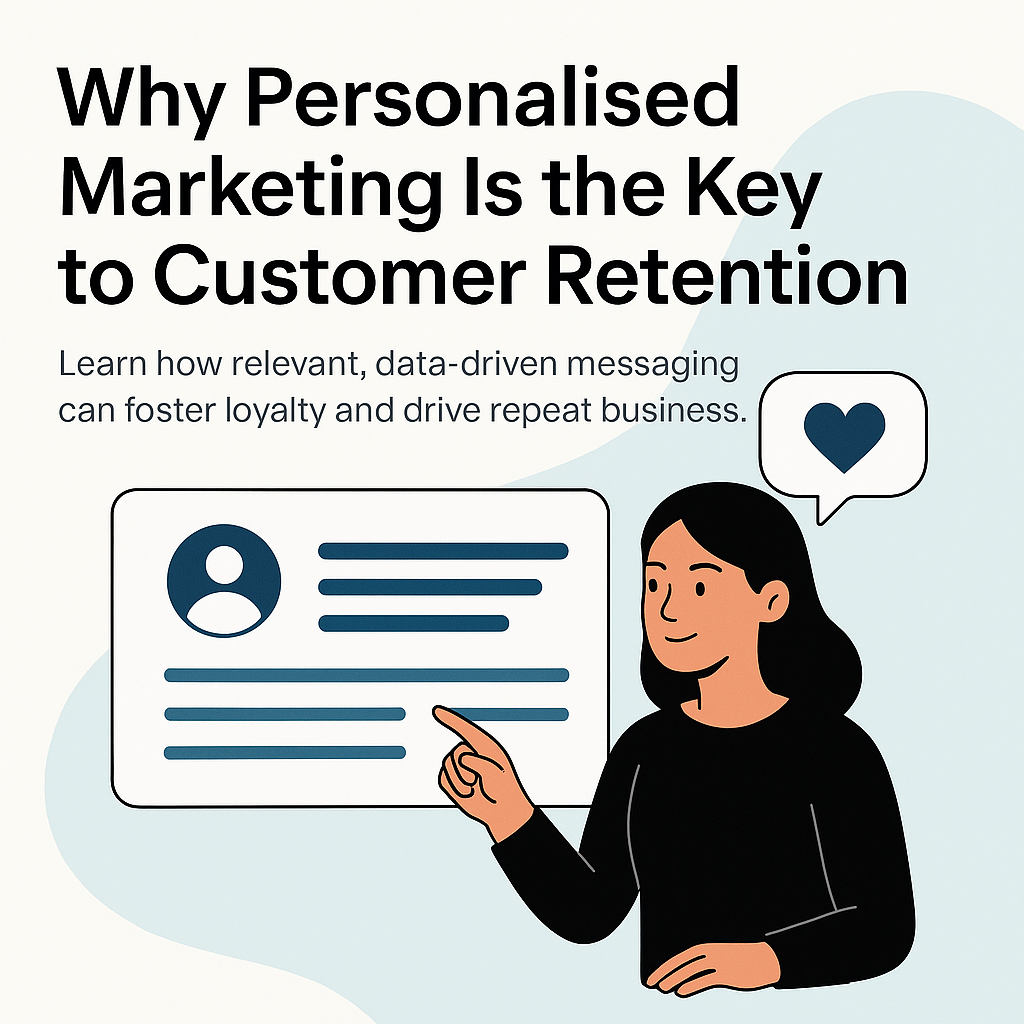Awesome Case Study
A simple and great template that's designed to focus on the content and perform great.

Most businesses focus heavily on acquiring new customers but the real growth lies in keeping the ones you already have. Today’s consumers expect brands to understand their preferences, anticipate their needs, and communicate like a trusted partner.
That’s where personalised marketing comes in not as a buzzword, but as a retention strategy that builds loyalty, trust, and lifetime value.
1. Customers Expect Relevance, Not Repetition
In an era of overflowing inboxes and digital noise, generic campaigns no longer work. Customers want relevant experiences that reflect their interests, history, and timing.
When your communication aligns with their intent — rather than interrupting it — engagement and loyalty naturally follow.
💡 Example: Instead of blasting a one-size-fits-all discount, send tailored recommendations based on previous purchases or browsing history.
2. Data Is the Foundation of Connection
True personalisation begins with data unification. Integrate your CRM, analytics, and ad platforms to build a single, actionable view of each customer.
When your systems talk to each other, you can deliver the right message, on the right channel, at the right time — every time.
⚙️ Pro Tip: Use tools like HubSpot and Monday.com to centralise data from email, ads, and support, ensuring your marketing feels personal, not random.
3. Automation Makes Personalisation Scalable
Personalisation isn’t about manual effort — it’s about smart automation.
Automated workflows can trigger unique messages based on user behaviour, such as re-engagement campaigns when activity drops or loyalty rewards after key milestones.
📈 Example: Send a thank-you email with an exclusive resource when a customer completes a year with your brand.
4. Personalisation Strengthens Emotional Loyalty
Retention isn’t just about discounts or points it’s about emotional connection.
Customers stay loyal to brands that make them feel seen and valued. A simple recognition of their preferences, milestones, or feedback can transform a transaction into a relationship.
💬 Example: Celebrating customer anniversaries or birthdays with a thoughtful note or offer goes a long way toward building emotional resonance.
5. Measure, Refine, and Repeat
Retention is an ongoing journey. Use engagement metrics — like open rates, repeat purchases, and lifetime value — to continuously refine your strategy.
The more you learn about your customers, the better you can predict what keeps them coming back.
📊 Pro Tip: Set up HubSpot dashboards to track retention-focused KPIs and identify when engagement begins to drop.